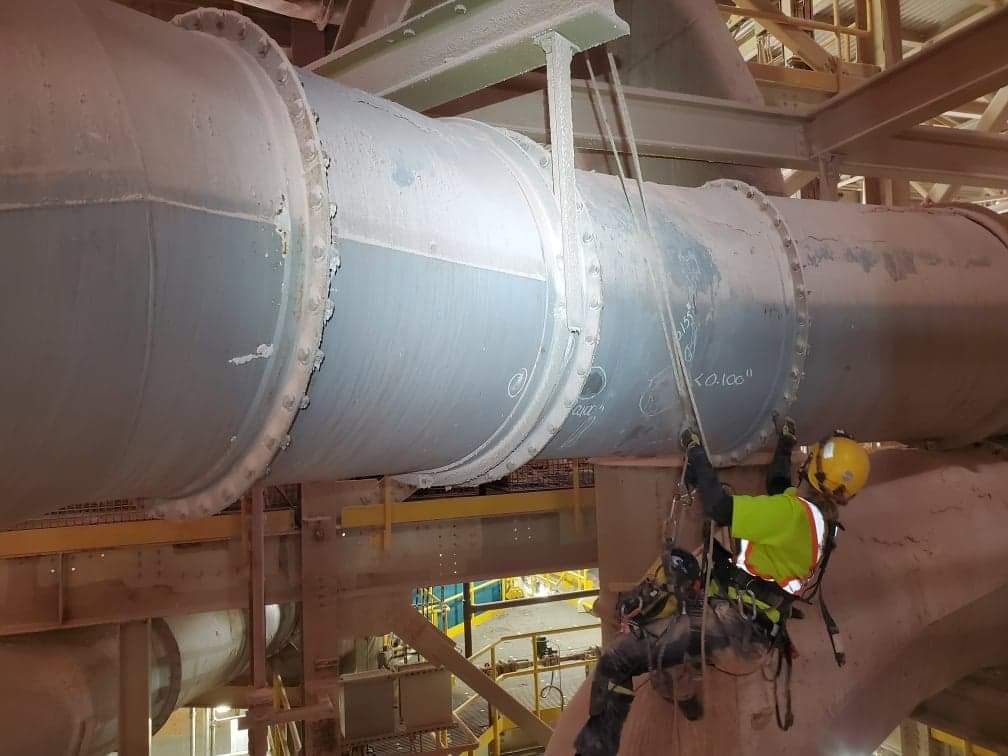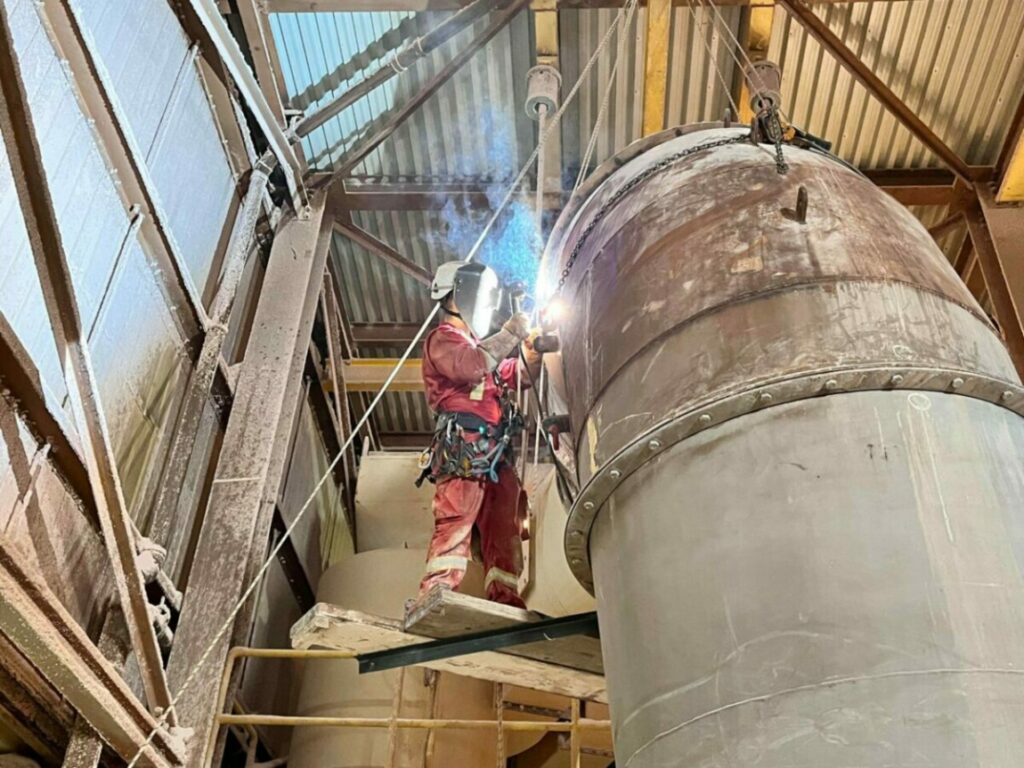REPAIR SERVICES
Engineering
Engineering in conjunction with inspection and repairs provides the most in-depth investigation with the most suitable repairs. Engineering requirments vary depending on the conditions and evaluation includes Fitness for Service, Risk-Based Inspection, Repair and modification recommendations, NDE Requirements, and Hydrostatic testing requirements with procedures.
Certification Requirements:
- Structural Engineer in a designated province.
- Mechanical Engineer in a designated province.
- Materials Engineer in a designated province.

Rope Access
Our highly trained technicians have the proper training and skills to perform work at any height and in isolated spaces. With Recons vast number of sites in North America and internationally, we ensure projects can be completed in a safe, effective and time-efficient manner.

Welding
Our CWB certified journeymen welders achieve outstanding results in any environment at any height, in any position and in confined spaces. Our CWB welding program ensures compliance with code requirements and our inspection personnel ensure that all repairs, modifications and replacements are carried out to code.

Choose Recon for your repair and inspection needs.
Common Questions
Most Popular Questions.
Still can’t find an answer to your question? Don’t hesitate to contact our team
Inspections are completely dependent on the level of cleaning and the significance of the indications found. If a piece of equipment has been thoroughly cleaned and is defect-free, the inspection is a relatively quick and low-cost service that can provide information and documentation to support required inspection intervals. Poor cleaning, extensive damage, and limited access can double or triple inspection costs in some cases. The best way to estimate the time an inspection will take is to consider the age of the equipment, the findings from the previous inspection, and to hire contractors that are experienced with the required tasks. Recon cost estimates will be based on the average time for required tasks unless documentation or previous findings are provided.
Approximately 0.040″ pit depth can be enough to cause significant degradation of the sound wave.
Any hazardous confined space entry requires a safety attendant that will monitor activities inside the space without engaging in any other tasks. The attendant will be equipped with a communication tool to contact rescue personnel in case of an emergency.
There are 3 basic options when it comes to manwatch:
1. Client provided in-house
2. Third-party rescue
3. Recon provided manwatch.
Consider the type of entry that is being performed, the product contained, the availability of rescue, and the conditions inside the confined space. Before entry a full analysis of the work is required, this includes the tasks being performed, who will be entering, what gear is required, rescue planning, ensuring adequate levels of training, and review of company rules when determining how to provide the required level of safety with confined space entries. These will vary according to each site.
Entrants may require SCBA, 1/2 masks and/or continuous atmospheric monitoring.
When determining cleaning requirements it is important to consider the expected damage mechanism and how difficult the expected defects are to find. Small pits, cracks, and defects will require additional cleaning. Internal corrosion, pitting and damage may limit inspection, this may require additional mechanical preparation of the surfaces. Consideration should be given to how difficult it would be to access this piece of equipment again, what are the costs associated with downtime and is this a critical or secondary asset. Due to the complicated nature of equipment isolation, it is best to not go through a difficult clean only to finish short of completing the job properly.

